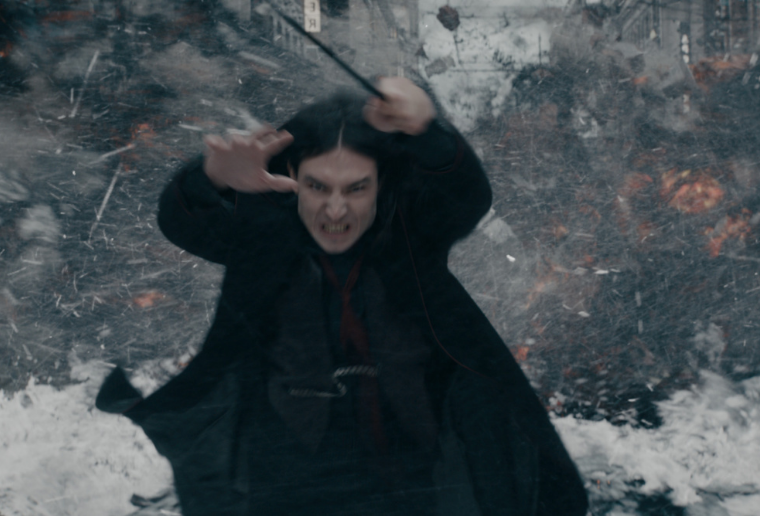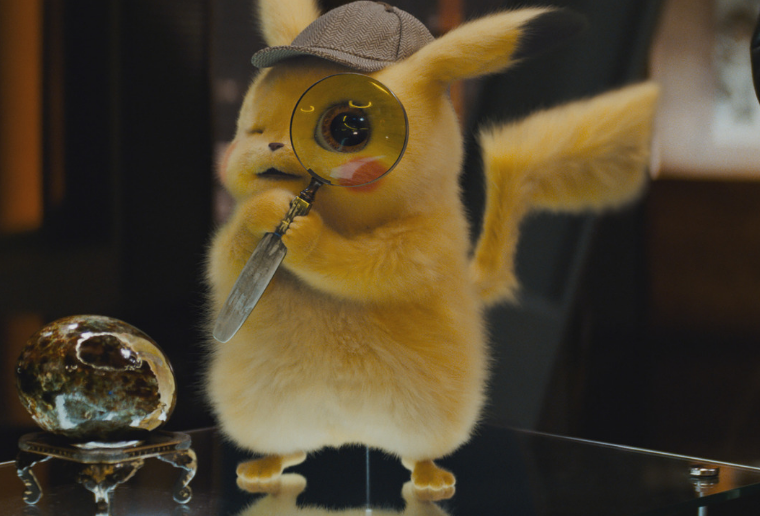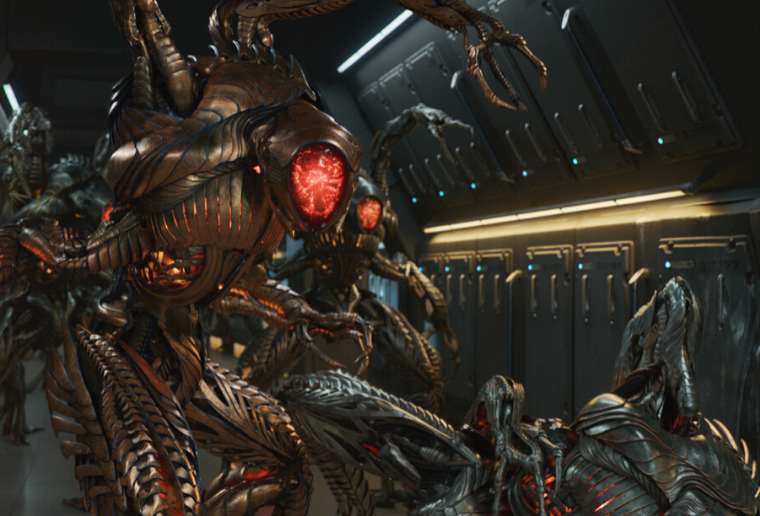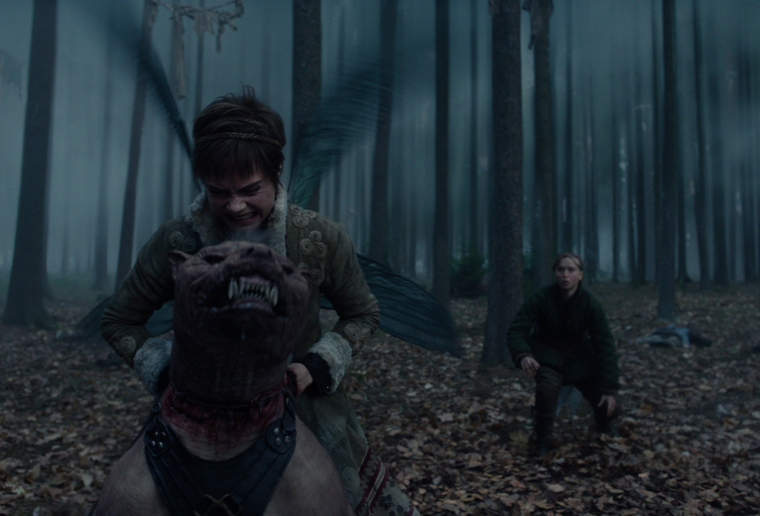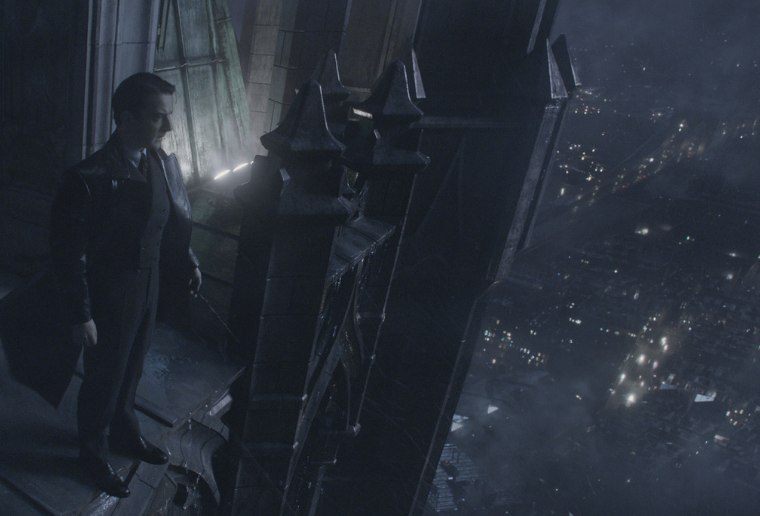Pokémon Detective Pikachu Case Study

Case Study
Pokémon Detective Pikachu is the long awaited live-action movie of the revered Japanese franchise. Fan-favourite Pikachu got to take centre stage as the leading character in this exciting world full of pocket monsters.
Pokémon Detective Pikachu threw an unexpected curve-Pokéball at fans of the revered Japanese franchise. Here was the movie they had long awaited: a live-action Pokémon populated by faithful CG renditions of all its famous pocket monsters. And fan-favourite Pikachu was right there taking centre stage; the leading character in this new and exciting world.
Except this Pikachu can talk, he’s voiced by Ryan Reynolds and he’s a hard-boiled ace detective.
It’s a far cry from the Ikue Ōtani-voiced incarnation of the character – but one not unfamiliar to die-hard fans of the series. Pokémon Detective Pikachu takes its inspiration from the 2016 Nintendo 3DS game of the same name. And what it does with the premise is stunning. Pokémon Detective Pikachu is hilarious, earnest, and heartwarming. And what’s more, it builds a Pokéworld that’s for more than just the fans. Audiences don’t need to know their Greninjas from their Mewtwos or their Eevees from their Flareons to enjoy the story that unravels.
But it was a different case for the Image Engine team. They needed to know these creatures inside and out. Image Engine stepped into the world of Pokémon Detective Pikachu towards the final third of the film’s production to breathe life not only into these four creatures but also into the world’s cutest detective himself.
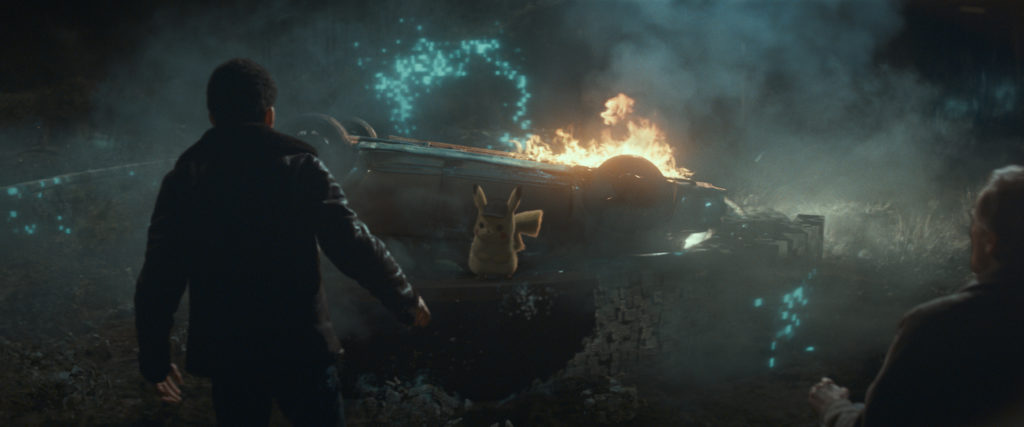
Let’s go, Pikachu!
Pokémon Detective Pikachu is set in the sprawling, hyper-realistic metropolis that is Ryme City. Here Tim Goodman, the son of missing investigator Harry Goodman, must pair with the wisecracking super sleuth of the title to find his father.
Pikachu was a core focus for Image Engine, who animated 75 shots of the character across the film. As a first step, the studio needed to ingest the core Pikachu asset – created by collaborating studios MPC and Framestore – into its animation pipeline.
“That ingest was a very quick process. We moved fast to give ourselves the time to feel out the character in the animation stages,” begins Bernhard Kimbacher, VFX Supervisor. “We started production in August 2018 and by October we had a version of a fully furry Pikachu in 60 shots.”
Richard Spriggs, Animation Supervisor, led the animation team. “Pikachu’s look came with very strict guidelines from The Pokémon Company in Japan. He needed to look exactly like Pikachu, from his silhouette to the details of his tail. When it came to his movement we had a little more leeway, but we still wanted to pay homage to the original cartoons. We studied a lot of references from the Pokémon universe. The challenge was to take that and convert it into a 3D object.”
The team also needed to consider the new dimensions of Pikachu’s personality, courtesy of Ryan Reynolds. “We tested different motions, working out the right facial shapes that would keep Pikachu as Pikachu, even while performing exaggerated expressions,” says Spriggs.
“Making a character cute, funny, and sad, all at the same time isn’t easy! The animation team is really talented though – they pulled off fantastic work that really sold the character.”
Pokémon groomers
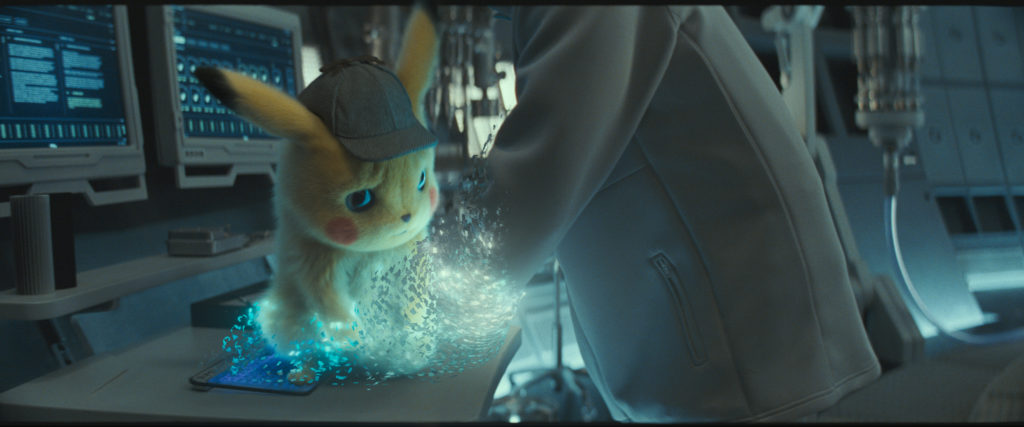
Pokémon Detective Pikachu’s creatures are technically cartoons. But even so, they had to feel like real beings if they were to blend into this live-action Pokémon world.
One of the most important factors here was the creatures’ fur. Pikachu, for instance, has some 13 million individual hairs, each reinforcing the illusion that this character belongs in his physical surroundings.
“We ingested the fur groom from MPC and Framestore. Following that, we had to work out how to achieve the same soft, realistic look as they had using our own shaders,” says Kai Pedersen, CG Supervisor. “The team did some very clever things in lookdev with fur shadowing and transparency. It made our version of Pikachu match the other studios’ exactly.”
13 million hairs is an impressive number, but it’s heavy geometry for a computer to handle – especially when it comes to animation. By removing the groom during this stage, Image Engine’s animators could focus on Pikachu’s performance without slowing down their work. Yet the sooner they could see the fur in a render, and see how it affected their work, the better.
“The CFX department wanted to address this, so they developed a way to get super quick fur renders,” says Spriggs. “Using this system the animation team could see what their performances looked like with fur volume at every daily playblast. That gave us more information to guide our next iteration of the performance.”
This process made things easier on the production side too. “Everything we provided for the screeners, even if it was first-pass animation, would have fur applied. The production never saw a naked Pikachu!” says Geoff Anderson, VFX Producer. “That enabled us to get some excellent feedback very early on, which in turn helped to push the quality bar.”
Genetically engineered
Image Engine also took point on 40 shots of another of Pokémon’s most revered characters – the ultra-powerful Mewtwo. Like Pikachu, Image Engine ingested the asset from MPC and Framestore before focusing on performance.
Mewtwo is first introduced to the Pokémon Detective Pikachu audience in a scene that calls back to the original Pokémon movie. “There’s a scene in that film where Mewtwo escapes from confinement,” says Spriggs. “The animation here matches that sequence very closely. It’s almost a direct comparison – and a nice piece of fan service.”
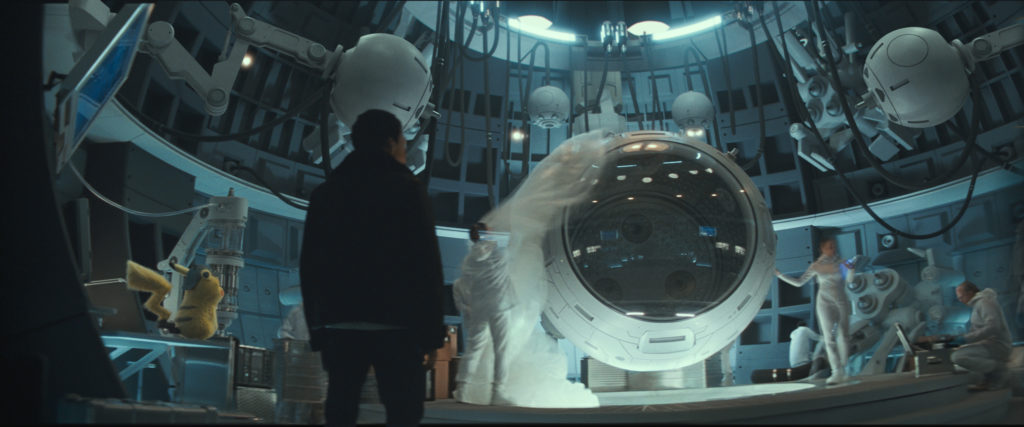
When it came to the asset, Mewtwo’s subtle peach fuzz didn’t present the same challenges to Image Engine as Pikachu’s 13 million hairs. It was the FX for his supernatural abilities that really set the team to work. The studio needed to lookdev several of the powers wielded by Mewtwo, with the final approach on the aesthetic lying with director Rob Letterman and The Pokémon Company itself.
“Initially we turned to the Pokémon universe for reference, where the Pokémon powers are very flashy,” says Kimbacher. “However, Rob decided to play these effects much more realistically.
“We worked closely alongside Rob to dial into the right look. What started out as bright, vibrant spheres of energy became much smaller, scaled-down effects with subtler notes of steam. Exploring that was a great process. It was satisfying to deliver a final look consistent with the style of film Rob wanted to create and one that sold his vision for the world.”
A visual evolution
Whereas Image Engine ingested Pikachu and Mewtwo from other studios, Eevee and Flareon were its own creations from start to finish. Furthermore, the studio was responsible for the evolution FX that turned the former into the latter.
Vulpine in appearance, Eevee presents a cuter version of the Pokémon, with a bushy tail and a large furry collar. Flareon is the more mature evolution – firier in look and personality, with an extra tuft of hair on its head. “We needed to create more hairs across even more detailed geometry for both of these characters. When we finished Eevee it was heavier in rendering and groom than Pikachu by almost double. It was the heaviest fur we’ve ever done for a character!” says Pedersen.
“Flareon in particular is much larger than Pikachu. It also has more hair on its head and both its and Eevee’s tails are quite large. It was a huge lookdev challenge.”
A challenge, but also an opportunity to explore new ways to optimize fur renders. “We pushed our pipeline as hard as we could to allow for even more efficient rendering of fur,” continues Pedersen. “We developed an automatic CFX task for this. Any time an animator finished a shot the system would immediately add the skin and fur sim on top of that. That meant only a handful of shots required a specific hero sim from a CFX artist.”
“This process has substantially streamlined the Image Engine pipeline,” says Anderson. “It’s already had a huge impact on the shows with fur and skin requirements that we’ve worked on since.”
Explosive FX
The final Pokémon for which Image Engine was responsible were the frog-like Greninja. These assets, once again ingested from other studios, appear across a handful of shots in which Pikachu deploys his “detective vision” ability. While the Greninja performance posed a familiar creative challenge, Pikachu’s detective vision was another matter. The studio carried out a focused lookdev effort before landing on its final desaturated, fresnel-effect look.
Yet Pokémon Detective Pikachu had an even more complex lookdev task in store for Image Engine: the destruction of a laboratory and a hologram effect that reveals how that destruction occurred.
The scenes in which these FX occur posed a series of intricate tasks for Image Engine. The studio needed to build a CG version of the demolished lab; return it to its pristine, undamaged state via the hologram FX; then reveal how the destruction occurred via a visually stunning explosive slo-mo sequence.

“There was a practical version of the lab built on set,” says Kimbacher. “The production shot the plate photography there, then blew it up and shot in the destroyed lab. That was an excellent reference when it came to rebuilding those environments in CG.
“The FX explosion itself takes place across a super slo-mo six-second shot, which occurs around a central sphere of water,” says Heribert Raab, FX Lead. “It’s a kitchen sink of FX. There are fire elements, rigid body elements like glass, and a water sim on top of all that. Each individual task is tricky: bringing them together is tough.”
Image Engine also needed to build the main character into this scene, and they had to ensure the character’s reaction to the explosion felt real, as Anderson explains: “The production shot the foreground plate on a different camera from that of the background. Lining those cameras up, getting the action into the camera move, and keeping the CG character in the frame was a challenge. We made sure the eyelines matched up exactly, so audiences wouldn’t feel like there was anything off in the moment.”
Designing a hologram
When Pokémon Detective Pikachu’s characters activate the laboratory hologram, it rebuilds the exploded surroundings, returning them to their previous, unexploded state. “We had to animate all the debris lying around back into its original position,” says Raab. “The FX swarms everything around, forming shapes and making everything look brand new.”
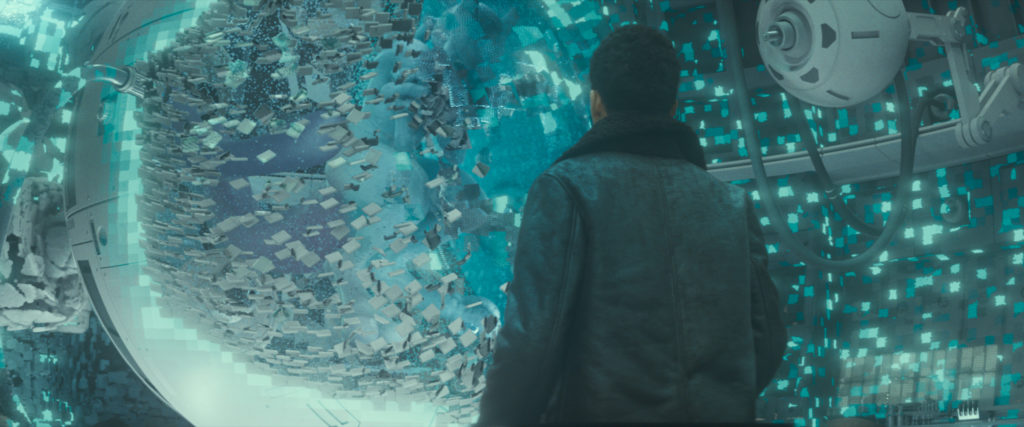
The FX for the hologram’s aesthetic required another iterative process with the director. Although the hologram features in only three shots, it was a technical and creative challenge – and one of the most demanding sequences worked on by the Image Engine team.
“Rob wanted to create an effect unlike any hologram FX in other movies,” says Raab. “The lookdev lasted until the last minute – we were constantly exploring new ideas. We tried a flocking system, a more hand-drawn look, and other sci-fi inspired ideas. We finessed it, getting closer to the elements that the production liked in each iteration.
“The amount of data in what we were creating was huge – the FX contained half a billion polygons at one point!”
Nanoparticles inspired the hologram’s final look: a swarming cloud of microscopic elements, which light up and coalesce to form the lab flashback. “The difference between this hologram and those in other movies is that this one is part real,” says Raab. “We took care of the transition into the hologram, but after that it’s all practically shot on set. This isn’t a hologram that flickers; it solidifies into something real. Making that transition feel convincing was key.”
Image Engine, I choose you!
Image Engine may have entered the production during its latter stages, but a quick ingest process, some clever new approaches to fur renders and a smart, experienced team ensured success on Pokémon Detective Pikachu.
“Being asked to tackle Pokémon’s cast of characters – and its chief mascot no less – was truly exciting,” says Anderson of the experience. “We got to be kids again and dive into this world that we’ve loved for so many years!
“But what’s more, Pokémon Detective Pikachu gave us a wonderful opportunity to further push and improve the Image Engine pipeline; particularly so with regards to creature performance. And what better world for our CFX artists and animators to ply their trade than one defined by the creatures that inhabit it?
“We’re incredibly proud to have had this opportunity to make a contribution to a world – a universe – that’s so revered,” said Liz Roberts, visual effects executive producer. “It’s one that continues to get bigger, better and even more loved as time goes on. We’re honoured to be a part of it.”



